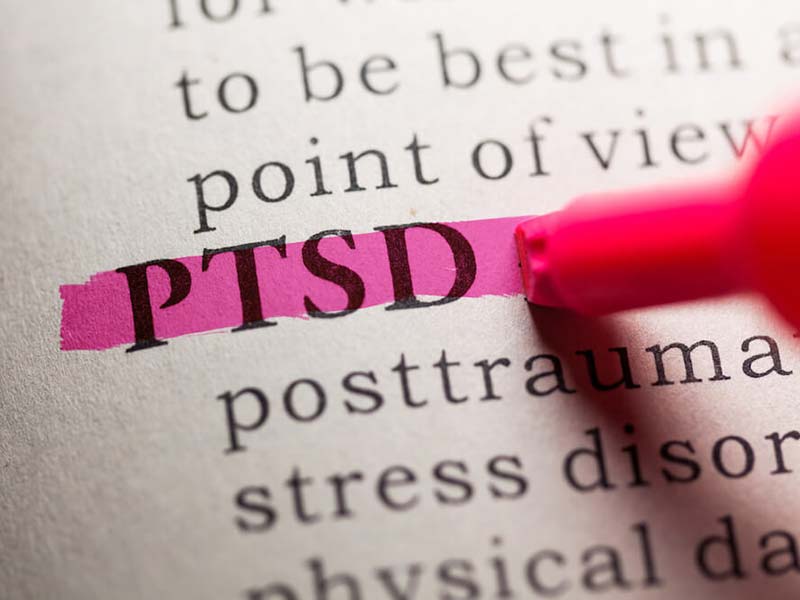June Is PTSD Awareness Month
When a traumatic event occurs in someone’s life, it is not unusual for them to have flashbacks, nightmares, or intrusive memories about the event. The truth is that in doing this, your nervous system is having a normal reaction to a major stressor.
What Is PTSD?
Post-traumatic Stress Disorder, or PTSD, is a seriously debilitating condition that can occur in people who have experienced or witnessed some sort of natural disaster, serious accident, terrorist incident, sudden death of a loved one, war, violent personal assault, or other life-threatening event. While there are many people who experience these events and recover, those with PTSD continue to feel severely depressed and anxious for months or even years following the event in question.
PTSD doesn’t discriminate; it affects men, women, and children of all ages and races. It often coincides with depression, substance abuse, or other anxiety disorders.
What Are the Symptoms?
PTSD is diagnosed after a person experiences symptoms for at least one month following a traumatic event. However, symptoms may not even appear until several months or even years later. It is characterized by three main types of symptoms:
- Re-experiencing the trauma through intrusive distressing recollections of the event, flashbacks, and nightmares.
- Emotional numbness and avoidance of places, people, and activities that are reminders of the trauma.
- Increased arousal such as difficulty sleeping and concentrating, feeling jumpy, and being easily irritated and angered.
For adults, adolescents, and children older than six, who have been exposed to actual or threatened death, serious injury, or sexual violation, diagnosis also includes:
- Directly experiencing the traumatic events
- Witnessing, in person, the traumatic events
- Learning that the traumatic events occurred to a close family member or close friend; cases of actual or threatened death must have been violent or accidental
- Experiencing repeated or extreme exposure to aversive details of the traumatic events
- Spontaneous or cued recurrent, involuntary, and intrusive distressing memories of the traumatic events
- Recurrent distressing dreams in which the content or affect of the dream is related to the events
- Flashbacks or other dissociative reactions in which the individual feels or acts as if the traumatic events are recurring
- Intense or prolonged psychological distress at exposure to internal or external cues that symbolize or resemble an aspect of the trauma
- Physiological reactions to reminders of the traumatic events
- Persistent avoidance of distressing memories, thoughts, or feelings about or closely associated with the traumatic events or of external reminders
How Is PTSD Treated?
The main treatments for those experiencing PTSD are psychotherapy, medications, or both. Of course, everyone is different, so a treatment that works for one person may not necessarily work for another person. Regardless of the treatment that works, it is important for anyone with PTSD to be treated by a mental health care professional who is experienced with this disorder. Sometimes, it’s necessary for people to try different treatments to find what works for their symptoms. Here’s a rundown of the different types of therapy options:
-
Exposure Therapy.
This helps people face and control their fear by exposing them to the trauma they experienced in a safe, controlled way. It requires mental imagery, writing, or even visits to the place where the event happened. The therapist uses these tools to help those with PTSD cope with their feelings.
-
Cognitive Restructuring.
This helps people make sense of bad memories. Sometimes, people remember an event differently than how it actually happened. They may feel guilt or shame about what is not their fault. The therapist helps people with PTSD look at what happened in a realistic way.
-
Stress Inoculation Training.
This form of therapy tries to reduce PTSD symptoms by teaching a person how to reduce anxiety. Similar to cognitive restructuring, this treatment helps people look at their memories in a healthy way.
-
Virtual Reality Treatment.
This treatment consists of custom virtual environments that have been carefully designed to support exposure therapy of anxiety disorders. The treatment involves exposing the person with PTS to a virtual environment that contains the feared situation, instead of taking the patient into the actual environment or having the patient imagine the traumatic situation.
If you believe you are suffering from a traumatic experience and would like to take the first step toward receiving care, contact Brevard Health Alliance today. We provide behavioral healthcare with Board-Certified Psychologists and Psychiatrists, and provide services for children, adolescents, adults, and families through individual and group therapy. We work side-by-side with primary care providers with the goal of improved health and functioning for all of the patients we serve.

















































































































































